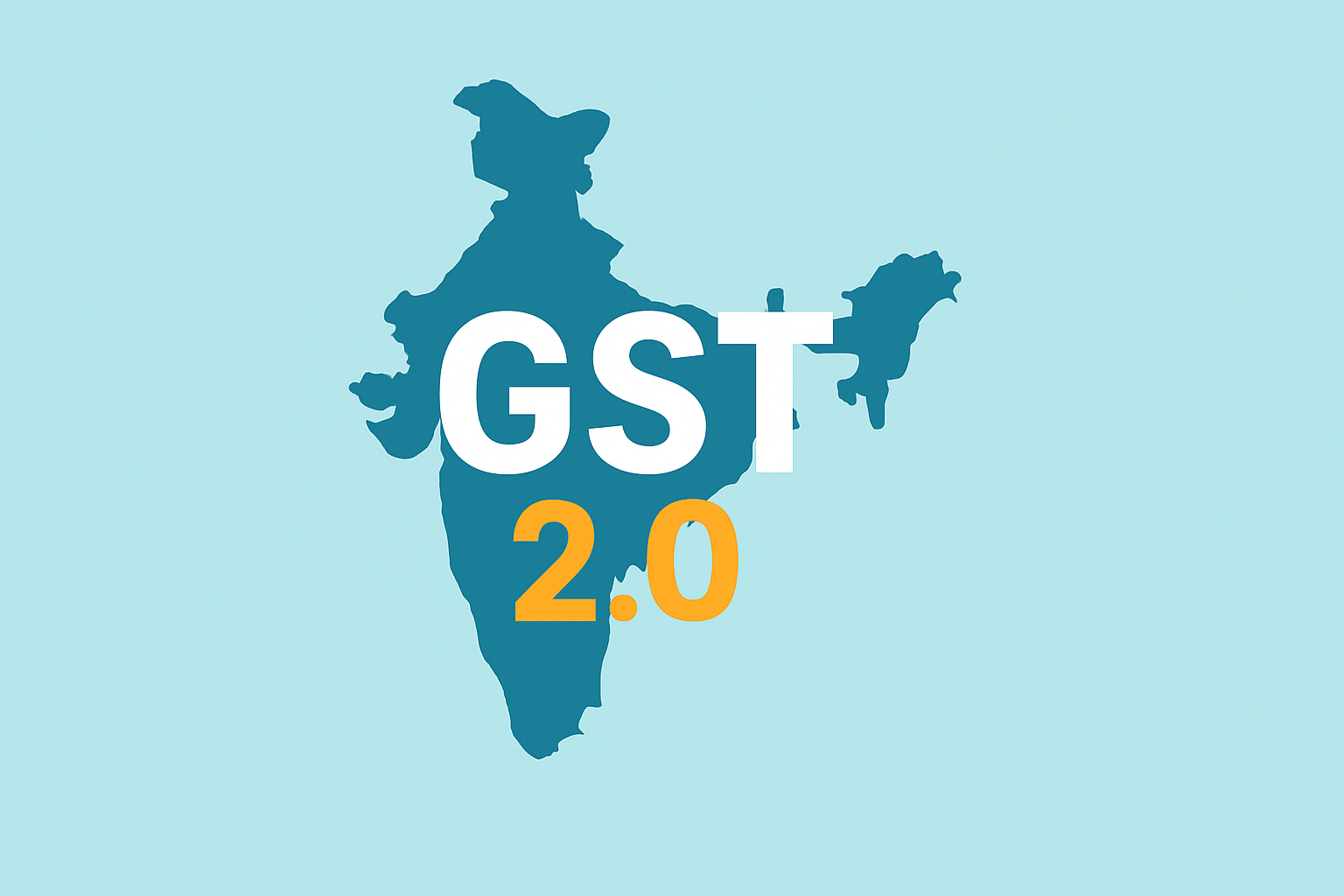Introduction
India’s Goods and Services Tax (GST) has undergone a historic transformation in 2025, marking the launch of what policymakers call GST 2.0. This reform comes almost eight years after the original GST system was introduced in 2017. The new structure simplifies tax rates, reduces consumer costs, and promises long-term benefits for businesses. However, it also brings fresh challenges for traders and certain industries.
The updated regime will officially come into effect on September 22, 2025, following the 56th GST Council Meeting chaired by Finance Minister Nirmala Sitharaman. With just three major slabs now—5%, 18%, and 40% (for luxury/sin goods)—India aims to create a more efficient and consumer-friendly taxation system.
What Has Changed in GST 2.0?
1. Simplified Tax Structure
-
Earlier, India had four primary slabs: 5%, 12%, 18%, and 28%.
-
Now, the slabs are consolidated into 5% and 18%, with a 40% slab for luxury and sin goods.
-
This simplifies compliance, making it easier for businesses to file returns and for consumers to understand pricing.
2. Healthcare Relief
-
33 life-saving drugs, including those for cancer and chronic diseases, have been exempted from GST.
-
Most other medicines will now attract just 5% GST instead of higher earlier rates.
-
Health and life insurance are now completely GST-free, a huge relief for middle-class families.
3. Essential Goods Get Cheaper
Items like packaged food, toiletries, soaps, shampoos, and household products now fall under the 5% slab, ensuring direct savings for consumers.
4. Electronics and Automobiles See Rate Cuts
-
Large appliances like air conditioners, refrigerators, and televisions move down to 18% GST from the earlier 28%.
-
Two-wheelers and small cars also get reduced GST, which is expected to boost demand by 5–10%.
-
Luxury vehicles, however, will attract the new 40% GST slab.
5. Ease of Doing Business
The GST Council has also simplified rules around credit notes and invoice matching, particularly benefiting the FMCG sector. Businesses no longer need to link every credit note with an exact invoice, reducing compliance headaches.
Sector-Wise Impact of GST 2.0
✅ Healthcare
-
Patients battling cancer, diabetes, and heart conditions will now save significantly on medicines.
-
Diagnostic kits and essential healthcare services are also cheaper.
-
Insurance premium costs drop as 0% GST applies to both life and health policies.
✅ FMCG (Fast-Moving Consumer Goods)
-
Companies like Hindustan Unilever, ITC, and Dabur expect strong growth as items like soaps, detergents, and packaged food become cheaper.
-
Analysts predict a rise in rural demand, which could benefit the entire supply chain.
✅ Automobiles
-
TVS Motors, Hero MotoCorp, and Bajaj Auto have already announced price cuts.
-
Car makers such as Maruti Suzuki predict up to 10% sales growth in the small car segment.
-
Luxury automakers like Audi and BMW, while passing benefits on smaller models, see higher taxation on premium vehicles.
✅ Real Estate & Construction
-
Construction materials and appliances are expected to cost less under the 18% slab.
-
However, developers are closely monitoring input credit changes.
✅ Traders & SMEs
-
While GST compliance is easier now, many small businesses worry about how input tax credit will be adjusted under the new system.
-
Gujarat-based textile and diamond traders, for instance, have voiced concerns about liquidity.
Consumer Impact: What Gets Cheaper and What Doesn’t
Cheaper Under GST 2.0:
-
Daily household essentials (toothpaste, soaps, shampoos, edible oils)
-
Packaged food items
-
Small cars and two-wheelers
-
Air conditioners, refrigerators, televisions
-
Health and life insurance premiums
-
Life-saving drugs and medical kits
Costlier or Same:
-
Luxury cars, SUVs, and premium motorcycles (40% GST slab)
-
Cigarettes, tobacco, and pan masala
-
Designer apparel above ₹2,500
Government’s Perspective
The government estimates a short-term revenue loss of ₹48,000 crore due to lower GST collection. However, officials believe this will be offset by:
-
Higher consumer spending
-
A boost in formal sector demand
-
Improved tax compliance with a simpler system
Experts also note that inflation could dip by 0.8–1.1%, giving the Reserve Bank of India (RBI) more room to manage interest rates.
Public Reactions
-
Consumers: Welcomed the reform, as monthly household expenses are expected to fall.
-
Businesses: FMCG, pharma, and automobile sectors are optimistic about higher sales.
-
Traders: Concerned about transitional issues in invoices and tax credits.
-
Economists: Call this a bold move that simplifies GST and strengthens India’s economic outlook.
FAQs on GST 2.0
1. When will the new GST rates apply?
The new GST slabs take effect from September 22, 2025, just ahead of the festive season.
2. What is the highest GST rate now?
A 40% slab applies only to luxury and sin goods like tobacco and premium vehicles.
3. Are all medicines tax-free?
No. Only 33 life-saving drugs are exempted. Most other medicines are taxed at 5%.
4. How will GST 2.0 affect inflation?
Experts predict inflation will decline by around 1%, giving relief to households.
5. Will GST 2.0 help small businesses?
Yes, compliance is easier, but some traders worry about input tax credit adjustments.
Conclusion
GST 2.0 marks a major turning point in India’s taxation system. By cutting down tax slabs, easing compliance, and making essentials more affordable, the government hopes to stimulate consumer spending and economic growth.
While challenges remain—especially for traders and luxury segments—the broader impact of GST 2.0 is positive for the middle class, healthcare sector, and industries like FMCG and automobiles.
As India prepares to implement this system on September 22, 2025, the focus now shifts to how businesses adapt and how much relief actually reaches consumers.









